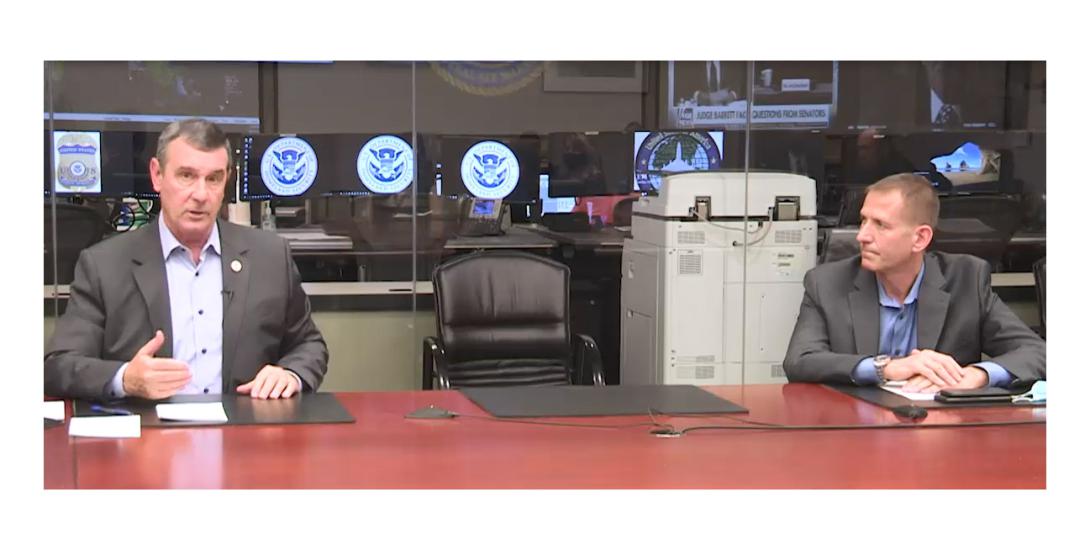TSA Shares Business Opportunities Tips
Because of its overall mission and in light of the COVID-19 pandemic, the Transportation Security Administration (TSA) offers industry numerous new ways to provide both standard and innovative solutions. The organization has published several documents that outline immediate and long-term plans and provide insights into where it will invest its limited resources. The information gives companies a better idea of where to devote their research and marketing dollars so they can partner with the agency.
David P. Pekoske, administrator, TSA, dove deeply into the information his organization provides on the Do Business with DHS website. Pekoske opened the TSA Industry Day, which AFCEA assisted in delivering and is available on demand online, by pointing out the astronomical role businesses have played in enabling the TSA to accomplish its many missions. Not only have companies enabled the administration to succeed in the past, they also are helping the organization address today’s challenges and move into the future it has planned.
To learn more about how to continue to work with Pekoske’s teams, he encouraged participants to review the TSA Strategy document. “We put this strategy together late in 2017 and published it in 2018 in the spring. If you read it tonight, it's very applicable today and that was the whole idea: Put a strategy in place that lives for a longer period of time so we can all support the strategy as an administrative task.
“What I said when I published the first version … was that I was going to publish an update. We published that update this year, and that will give you an idea of how I and my team plan to execute on the strategy we all agreed to in 2018 all the way through 2026,” Pekoske stated.
The TSA is particularly proud of its small business accomplishments over the past year; the small business contract awards totaled more than $500 million. Through its small business partners, Pekoske emphasized, the TSA is working “incredibly closely with both airports and the air carriers.”
The agency has endeavored to be as transparent as possible with its response activities to the COVID-19 crisis, he said. For example, on its public-facing website it has been posting the current positive test results of the “in-theater workforce” members. Consequently, concerned passengers can see if there might have been an employee who tested positive in the airport they recently used. “A sensor will tell me where this employee traditionally worked and what the date of the last positive test was,” he explained.
In addition, the TSA has been posting the number of passengers going through all domestic airports daily on the website, so industry, media and other interested parties are aware of how the U.S. travel economy is recovering amid the pandemic.
“I will tell you that we're seeing some pretty good recovery numbers, but the recovery is uneven. [It] is reflected a lot in our domestic hub airports and a little bit less so in our international airports given the travel restrictions that are imposed internationally,” Pekoske shared.
Because he understood many Industry Day participants were particularly interested in the TSA’s future plans so they can anticipate requests of information, requests for proposal and contract awards, Pekoske didn’t hold back on directing them to a number valuable resources. These opportunities were explained in more detail during the TSA Forecasted Procurement presentation at the end of the day.
“If you want to get a sense for what TSA has prioritized and what actions the headquarters staff is building its work around, just look at Administrator’s Intent 2.0. The document this really important for all of you. It is our capital investment plan. It's a plan that we publish every year with our budget submission the Capitol Hill,” he stated.
The document lays out the agency’s plans for capital investments in general five-year increments. “It’s a very important document to understand. Where are the constraints? Where are the areas of priority and emphasis for the agency?” the administrator stated.
Over the next five-year period, the TSA has identified number of topics it will delve into and created road maps for them, including cybersecurity, insider threat and biometrics. The documents are posted the TSA web page.
“These are very carefully put together. They're not done inside TSA only but instead with robust input from all of our partners and will give you an idea of which direction we will go,” Pekoske said.
An air cargo security road map will be released some time in 2021, he added, and the TSA recently provided a report about surface transportation security to Capitol Hill.
To view Donald Pekoske’s entire presentation, visit the TSA Industry Day videos on demand. Additional information about working with the TSA is available on the Open For Business website.




Comments